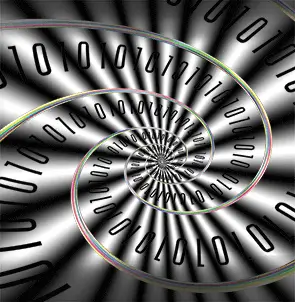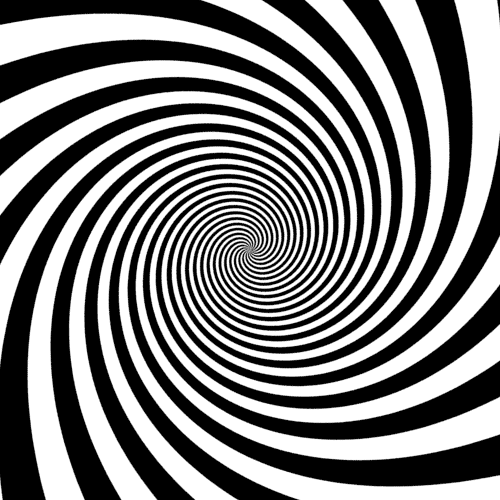Understanding Limits and Infinity
Page last updated 06 Oct 2023
Much of conventional mathematics involves contradictions that are simply ignored or dismissed as unimportant. This outlook is exemplified by a comment by John von Neumann that “…in mathematics you don’t understand things. You just get used to them.” As quoted in The Dancing Wu Li Masters: An Overview of the New Physics (1979) by Gary Zukav, Bantam Books, p. 208, footnote.

It is astonishing that anyone should be content with that approach. The goal should be to investigate the reasons for such contradictions, and by logical analysis of the reasons, to create a methodology of mathematics that eliminates those contradictions. One of the most common source of contradictions in mathematics is the failure to provide a clear logical analysis of cases that involve the notion of a summation involving infinitely many items. And in conventional mathematics a limiting condition is often invoked when it is convenient to attain a desired result, while ignoring any consideration of limiting conditions at other times.
Mathematicians generally assume that there is no inherent problem with the notion of an actual summation involving infinitely many items, whereas this is not the case, as discussed in Sums of infinitely many fractions: 1 and Sums of infinitely many fractions: 2.
Here we are going to discuss the definition of sets that involves infinitely many decreasing intervals. By analyzing such cases in terms of the limiting value of the iterative summation of items of an infinite set, the contradictions that arise from the naive notion of an actual summation of infinitely many items disappear. There is a crucial difference between:
- simply referring to a set that contains infinitely many terms Note, however, in some cases the elements of a set are defined in terms of a summation of infinitely many terms, and in such cases a limiting condition must be applied to the definition, as in the cases discussed here. and
- calculating a value that is defined in terms of a summation involving a set of infinitely many terms.
The essential details of the case that we will cover here are the same as that on the page Lebesgue measure, viz:
First, we define:
An open interval is an interval that does not include the endpoints that define that interval (for example the open interval whose endpoints are 1⁄3 and 1⁄2 is the set of all points between 1⁄3 and 1⁄2 but not including the points 1⁄3 and 1⁄2).
A closed interval is an interval whose endpoints are included in the interval.
Now we give a fairly conventional definition of a set
Given the closed interval between 0 and 1 and a suitable listing/enumeration See One-to-one correspondences and Listing the rationals. that gives a unique one-to-one correspondence of natural numbers to the rational numbers between 0 and 1 (an example is given at A specific listing of rational numbers). Then, going through this list of rational numbers, for the first rational we define an associated open interval 1⁄10 wide with that rational at the midpoint of the interval; our set now includes all the numbers in that interval (not including the endpoints). For the next number, define an associated open interval 1⁄100 wide with that rational at the midpoint of the interval; we add those numbers to our set. For the next number, define an associated open interval 1⁄1000 wide with that rational at the midpoint of the interval; we add those numbers to our set. And so on, with each subsequent open interval being 1⁄10 of the width of the previous interval.
The resultant contradiction
And, as it stands, this definition - which makes no consideration of limiting conditions - results in an obvious contradiction:
Without any inclusion of a limit condition, all the intervals that are in the set
- within a non-zero width interval that is not in the set
A , or - a single point degenerate closed interval
A zero width interval is also known as a degenerate interval, and is a single point, and a non-degenerate interval is an interval that consists of more than one point. Hence a degenerate closed interval is a single point that is at the same time the midpoint and both endpoints of that interval.
that must be both a left endpoint of an open interval of
A , and a right endpoint of an open interval ofA .
However, option (1) is contradictory - there cannot be any non-zero width intervals that are not in the set
Since some people appear to have difficulty accepting that the definition is inherently contradictory, I explain it in detail on the page Understanding sets of decreasing intervals.
Resolution of the contradictions
While the following is intended to be a fairly informal presentation, the paper PDF On Smith-Volterra-Cantor sets and their measure gives a more formal and detailed exposition.
The above definition of the set
As noted above, the notion of an actual summation of infinitely many numbers results in contradictions, and the same applies to the notion of an actual summation of infinitely many intervals. This is because the summation of intervals is actually the addition of each right endpoint and the subtraction of each left endpoint, and so a summation of intervals is actually a combined summation and subtraction of numbers. And when there are infinitely many intervals, there are infinitely many numbers for such addition or subtraction. Attempting to define the set
It is noteworthy that it is common in mathematics to consider the limit state of a non-terminating series or summation. For example, irrationals are definable in terms of a limit of a summation over a series of infinitely many rationals. And by an argument similar to that in Cantor’s 1874 non-denumerability proof, a limiting value can be defined from a sequence of rational numbers and which is a single irrational number.
Defining a set in terms of closed intervals
To analyze what is the correct definition of the set
The limit state of a simple sequence of closed intervals of decreasing size is as a single point closed interval where the endpoints coincide and are that single point. Since there is no limit to the quantity of intervals in the definition of the set
This may appear to be counter-intuitive, but history shows us that we should never set logic subservient to intuition. It can be seen that as the enumeration progresses, the overall situation is that the denominator of the associated rationals becomes larger and larger. The limit state is that the denominator is infinitely large, in which case the number cannot be a rational, since all rationals have finite denominators hence the limit state is an irrational number. If we consider the decimal representation of a rational, it is as a decimal point followed by either a finite sequence of decimal digits, or an infinitely long sequence where there is at some point a finite sequence of digits that repeats itself indefinitely. It can be seen that as the enumeration progresses, there will be rationals with longer and longer such repeating finite sequences. Hence the limit state is as infinitely long sequences that do not repeat, and such numbers are irrational numbers.
Given that this is the case, then it follows that the limit state of the set
We can now see that the limit states of the removed intervals and the limit states of the remaining intervals are logically compatible and that both lead to the same result for the constitution of the set
Defining a set in terms of open intervals
We can now give a logically coherent definition for the set
Hence the set
Note that it may not be possible to define a one-to-one correspondence from natural numbers to all such points from the defintion of the set
It was demonstrated on the page Lebesgue measure that every such limit point is uniquely associated with a “complete interval”
We use the term “complete interval” to indicate an interval that is not a sub-interval of any defined interval of
The fallacy of the conventional notion that the Lebesgue measure “proves” that the set
Refusing to accept the logic of limit states

Many people appear to have an emotional attachment that drives them to attempt to defend the notion that the set of numbers in the set
These people feel that they must automatically reject any suggestion that there might be a logical flaw in their belief system, rather than attempt to analyze it logically. Their emotional attachment to their set of beliefs also means that, even though all the points in the set
While these beliefs have a superficial veneer of coherence, a detailed logical examination shows up the major flaws in the overall system that is the conglomeration of the individual concepts. It is rather like observing a completed jigsaw from a distance, where at first it may appear to be satisfactory, but as one approaches closer, one can see that several of the pieces have been put into the wrong places.
In order to defend their beliefs, some people cling to the claim that it is not imperative to apply limit states, but as demonstrated above, this results in a blatant contradiction. But it appears that many people hold stubbornly to their belief systems, which is why one sees arguments that strenuously attempt to justify the arcane notions of Lebesgue measure. But why do people that proclaim themselves to be logicians who prioritize logic over emotion continue to defend what is logically indefensible?
Hopefully at some point in time, mankind will put aside primitive illogical concepts that are long past their sell-by date, and instead strive to develop systems of mental concepts that are fully coherent and which do not result in contradictions. Systems of mathematical concepts and logical concepts that are free of contradictions are known as consistent systems, and I believe that it is only by applying rigorous logical analysis that the contradictions that are evident in conventional mathematics will be eliminated.
For a more detailed overview of the above, please see the paper PDF On Smith-Volterra-Cantor sets and their measure. And the page The Origins of Transfinite Numbers shows how misunderstandings regarding the unions or intersections involving infinitely many sets originated and later became ingrained into mathematics.
Note: Mention in a sci.math forum
I came across a sci.math forum A Counter-argument against Lebesgue Measure Theory? that makes some erroneous claims about my site. In case anyone might think that there is some substance in what is discussed there, I thought I should point out a few facts about what is written there, and I have detailed these at Analyzing the Lebesgue result on the page Lebesgue measure.
Formal set definitions
As noted above, since the definition must include the notion of a summation that is to be applied to an infinite set (by a variable
![]() {r ∈ R :
{r ∈ R :
where
The set
![]() {r ∈ R :
{r ∈ R :
An example of misrepresentation
On Quora, a Jim Stillz (this appears to be a pseudonym used only for that single Quora post) has written an answer to Why does James R. Meyer object to Gödel’s incompleteness theorem? claiming that I do not understand intervals, asserting that I am claiming: I don’t post on Quora anymore as it is a mine of misinformation that is overloaded with people who think their opinions are more important than logic and evidence. See also Answers to some Quora questions.
He has a concept of “limiting condition” where he assume that one can arbitrarily pass a limit inside a union in the following way:
Union of [1⁄n + 1 , 1⁄n ] as n ranges from 1 to N equals [1⁄1 + N , 1] , and we know that Union of [1⁄n + 1 , 1⁄n ] as n ranges from 1 to infinity equals (0,1].
But he thinks that:
Limit of [Union of 1⁄n + 1 , 1⁄n ] as n ranges from 1 to N] as N goes to infinity equals the limit of [1⁄n + 1 , 1] as N goes to infinity which equals [limit of 1⁄n + 1 as N goes to infinity,1] which equals [0,1].
He believes he is correcting the “illogical flaws of calculus” whereas what he is really doing is showing how little he understands of calculus.
His claim that I believe that I am “correcting the ‘illogical flaws of calculus’ ” is an outright lie - I have never referred to illogical flaws in calculus.
He doesn’t explain what he means by “passing a limit inside a union”, and he complains that I am not defining what I am doing. But there are two different definitions involved here, and hence it is not surprising that they generate different results: Note that I had not referred specifically to the intervals [1⁄n + 1 , 1⁄n ] that Stilz uses, but the definitions follow directly from what I have written.
The first case is a definition which does not involve any explicit use of a limit, and defines all points between 0 and 1, including 1 but not zero:
Note that cases like this are special cases which entail an implicit use of a limit, and should not be used as a justification for a generalization for a union involving infinitely many cases; for a fully detailed analysis of such cases see the page The Origins of Transfinite Numbers.
The second case is a definition which does explicitly stipulate a limit, and defines all points between 0 and 1, including 1 and zero:
![]() {r ∈ R: 1⁄n + 1 ≤ r ≤ 1⁄n}, n ∈ N, n > 0
{r ∈ R: 1⁄n + 1 ≤ r ≤ 1⁄n}, n ∈ N, n > 0
Since the limit of both


Rationale: Every logical argument must be defined in some language, and every language has limitations. Attempting to construct a logical argument while ignoring how the limitations of language might affect that argument is a bizarre approach. The correct acknowledgment of the interactions of logic and language explains almost all of the paradoxes, and resolves almost all of the contradictions, conundrums, and contentious issues in modern philosophy and mathematics.
Site Mission
Please see the menu for numerous articles of interest. Please leave a comment or send an email if you are interested in the material on this site.
Interested in supporting this site?
You can help by sharing the site with others. You can also donate at where there are full details.
where there are full details.